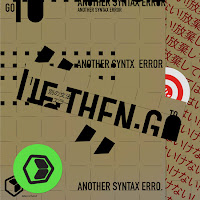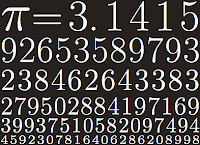This is another example of flow control. This is not at all an elegant program. It almost hurts me to post it. Hopefully as I become more comfortable with the language the flow will be nicer on the eyes. This program is a first for me because it tests the input and then asks the user if he/she would like to try again if the input is invalid. I used a while loop for test.
/*
* This program takes the 3 lengths of a triangle's
* sides, determines if these are valid lengths,
* and then computes the perimeter.
*/
package perimeterofatriangle;
import javax.swing.JOptionPane;
/**
* @author Neil master coder
*/
public class Main {
public static void main(String[] args) {
//initialize var for triangle sides
int side1=0, side2=0, side3=0;
//initialize var for continue question
int question=0;
while (question==0) {
String stringSide1 = JOptionPane.showInputDialog(null,
"Enter the first side " +
"of the triangle.");
String stringSide2 = JOptionPane.showInputDialog(null,
"Enter the second side " +
"of the triangle.");
String stringSide3 = JOptionPane.showInputDialog(null,
"Enter the third side " +
"of the triangle.");
side1=Integer.parseInt(stringSide1);
side2=Integer.parseInt(stringSide2);
side3=Integer.parseInt(stringSide3);
if ((side1+side2
(side2+side3
(side3+side1
String stringQuestion = JOptionPane.showInputDialog(null,
"The triangle you entered is invalid." +
" Do you want to try again? " +
"Enter 0 (zero) to continue or " +
"any other number to quit.");
question=Integer.parseInt(stringQuestion);
}
else{
if (question==0){
JOptionPane.showMessageDialog(null, "The perimeter " +
"of a triangle having sides " +
side1 + " , " +
side2 + " and " +
side3 + " " +
"is " + (side1+side2+side3) +".");
question++;
}
}
}
}
}
For, while, do while, if, if-then... These are all control statements. I'm at the part in my practice where loops come into play as well as controlling when instructions are executed.
The first exercise is a program which will sort three integers from largest to smallest. To do this I used a couple if and else-if statements.
/*
* This program is meant to prompt the user for
* three integers, sort those integers from
* smallest to greatest and then display
* those integers. It is also an example
* of if/else control statements.
*/
package sortingthreeintegers;
import javax.swing.JOptionPane;
/**
* @author Neil master coder
*/
public class Main {
/**
* @param args the command line arguments
*/
public static void main(String[] args) {
int num1=0, num2=0, num3=0;
int smallest=0, middle=0, largest=0;
for (int i=1; i<4; i++) {
String stringNum = JOptionPane.showInputDialog(null,
"Enter integer number " + i + " to be"
+ " evaluated." );
if (i==1)
num1=Integer.parseInt(stringNum);
else if(i == 2)
num2=Integer.parseInt(stringNum);
else if(i == 3)
num3=Integer.parseInt(stringNum);
}
if ((num1<=num2) && (num1<=num3)){
smallest = num1;
if (num2<=num3){
middle=num2;
largest=num3;}
else {
largest=num2;
middle=num3;}
}
else if((num2 <= num1) && (num2 <= num3)){
smallest=num2;
if (num1
middle=num1;
largest=num3;}
}
else if((num3 <= num1) && (num3 <= num2)){
smallest=num3;
if (num2
middle=num2;
largest=num1;}
}
JOptionPane.showMessageDialog(null, "The numbers arranged "
+ "from smallest to largest are: "
+ smallest + " " + middle + " " +
largest + ".");
}
}
|
Posted in
Java
,
JOptionPane
,
Pi
|
Posted on
11:41 PM

Computers may be incredibly efficient but they are also equally dumb.
- Ask user for radius.
- Ask user for cylinder length.
- Tell user cylinder volume.
Sounds simple enough... until the program breaks down because the the user gives the computer a bunk number for either the length or radius. Plug in a negative radius and the program will compute a negative volume. Last I checked negative volumes aren't possible, but I could be wrong. Next time I check in with Steven Hawking I'll ask him about negative volumes.
Assuming we want positive volumes then we'd also want positive lengths and radii. Here's a modified version of "Find that Cylinder's Volume" that uses if/else to test the input. If it finds a negative value it prints the error and exits.
/*
* This is a basic application meant to calculate
* the area of a circle. It's an improvement on past
* program because it verifies input as a positive number.
*/
package calculateareaofcircle2;
import javax.swing.JOptionPane;
/**
* @author Neil
*/
public class Main {
/**
* @param args the command line arguments
*/
public static void main(String[] args) {
// Prompt user for radius of cylinder and store it as variable
String stringRadius = JOptionPane.showInputDialog(null, "Enter the"
+ " radius of the cylinder.", "Find that Volume!",
JOptionPane.QUESTION_MESSAGE);
// Convert string value to a double variable
double radius = Double.parseDouble(stringRadius);
if (radius >= 0) {
// Prompt user for the length of the cylinder and
// store it as a variable
String stringLength = JOptionPane.showInputDialog(null, "Enter the"
+ " length of the cylinder.", "Find that Volume!",
JOptionPane.QUESTION_MESSAGE);
// Convert string value to a double variable
double length = Double.parseDouble(stringLength);
if (length >=0) {
/*
* Calculate the volume of the cylinder by first finding the area
* of the base and then multiplying it by the length.
*/
// Declare area, calculate it, and then store it
double area = (radius * radius) * 3.141593;
// Declare volume, calculate it, and then store it
double volume = area * length;
// Display result of calculation
JOptionPane.showMessageDialog(null, "A cylinder that is " + length +
" long and " + radius + " in radius has a volume of " + volume,
"Find that Volume!", JOptionPane.QUESTION_MESSAGE);
}
else {
JOptionPane.showMessageDialog(null, "The cylinder length must be "
+ "a positive number.");
}
}
else {
JOptionPane.showMessageDialog(null, "The radius must be a positive "
+ "number.");
}
}
}
I'm always a fan of European things. Most often this means cars & food. The metric system though... is something I could take or leave. Like most Americans I don't have a natural sense of how far a kilometer is or how heavy a kilogram weighs. Either of these has to be converted into something in the Standard measurement before anything meaningful can be understood. Thank god for Java.
This is a program which will convert a length in feet into a length in meters.
/*
* This is a simple program to convert feet into meters. Feet are entered
* as a double value, converted into meters as a double value, and then output.
* In/out dialogs are generated using the swing JOptionPane class.
*/
package feet2meters;
import javax.swing.JOptionPane;
/**
* @author Neil
*/
public class Main {
/**
* @param args the command line arguments
*/
public static void main(String[] args) {
//prompt the user to enter the number of feet to be converted
//and store as a string value
String stringFeet = JOptionPane.showInputDialog (null,
"Enter the number of feet to be converted to meters",
"Feet2Meters!", JOptionPane.QUESTION_MESSAGE);
//convert feet string value into a double variable
double feet = Double.parseDouble(stringFeet);
//initialize meters as double variable and calculate value
double meters = feet * 0.305;
//display number of meters calculated from feet given
JOptionPane.showMessageDialog(null, feet + " feet is equal to " +
meters + " meters.", "Feet2Meters!",
JOptionPane.QUESTION_MESSAGE);
}
}
|
Posted in
Java
,
Pi
|
Posted on
5:50 PM

PI is best served with ice cream, or a cold glass of milk. Sometimes though it goes just fine with some fresh Java. This program takes a given radius (unprompted) and calculates the area of the circle that radius would create.
/* This is a simple program to calculate
* the area of a circle. To begin, the
* radius will be a fixed variable.
*/
package calculateareaofcircle;
/**
*
* @author Neil
*/
public class Main {
public static void main(String[] args) {
double area;
double radius;
radius=20;
area=3.14*radius*radius;
System.out.println("The area of the circle with a radius of " +
radius + " is " + area);
}
}
|
Posted in
|
Posted on
4:41 PM
Wife & laptop in hand we hit the casino the other day. She was excited to catch a concert with some friends and I was excited to play some games and get some practice coding done. Given the environment the programs were nothing challenging. We had a good time though. She loved the concert, I came out even on the tables, and two programs compiled error free.
|
Posted in
Java
,
JOptionPane
,
Pi
|
Posted on
12:41 AM
Easy.... as.... pi!
/*
* This is a basic application meant to calculate the volume
* of a cylinder given its radius and length
*/
package cylinder_volume;
import javax.swing.JOptionPane;
/*
* @author Neil
*/
public class Main {
public static void main(String[] args) {
// Prompt user for radius of cylinder and store it as variable
String stringRadius = JOptionPane.showInputDialog(null, "Enter the"
+ " radius of the cylinder.", "Find that Volume!",
JOptionPane.QUESTION_MESSAGE);
// Convert string value to a double variable
double radius = Double.parseDouble(stringRadius);
// Prompt user for the length of the cylinder and store it as a variable
String stringLength = JOptionPane.showInputDialog(null, "Enter the"
+ " length of the cylinder.", "Find that Volume!",
JOptionPane.QUESTION_MESSAGE);
// Convert string value to a double variable
double length = Double.parseDouble(stringLength);
/*
* Calculate the volume of the cylinder by first finding the area
* of the base and then multiplying it by the length.
*/
// Declare area, calculate it, and then store it
double area = (radius * radius) * 3.141593;
// Declare volume, calculate it, and then store it
double volume = area * length;
// Display result of calculation
JOptionPane.showMessageDialog(null, "A cylinder that is " + length +
" long and " + radius + " in radius has a volume of " + volume,
"Find that Volume!", JOptionPane.QUESTION_MESSAGE);
}
}







